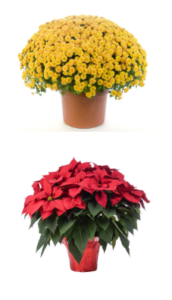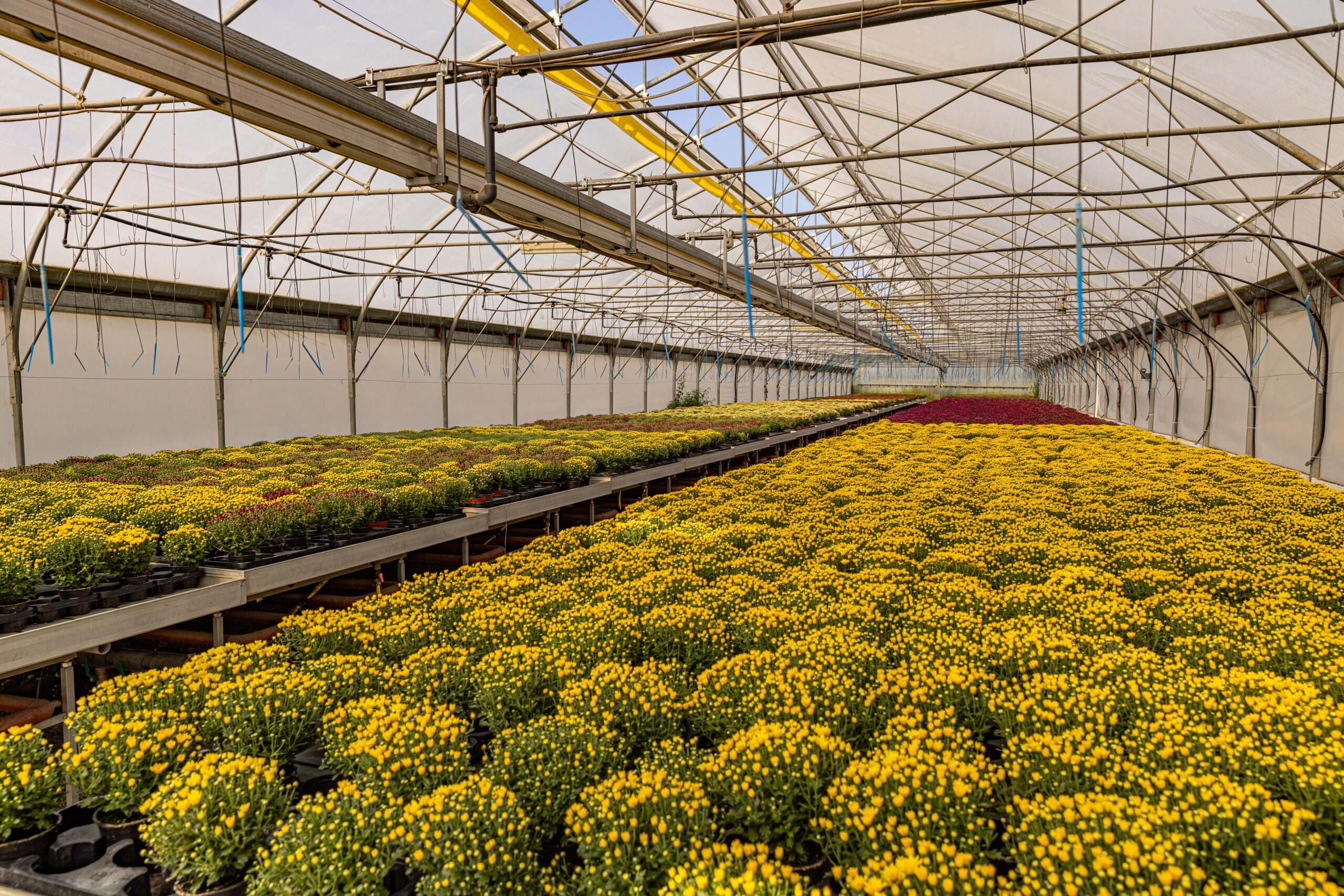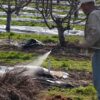For all the mum and poinsettia growers out there, we know you are gearing up to start propagating or transplanting your 2024 crop. If you want to reduce your crop’s water consumption, more effectively utilize your fertilizer, and mitigate plant stress – it’s time for you to start applying mycorrhizal fungi.
“Mums and poinsettia are two of the most perfect plants for mycorrhizae.” said Jeff Gabric, Sales Account Manager for the Northeast at Mycorrhizal Applications, “As a crop that usually takes around 24 weeks to grow, they are practically designed for mycorrhizae – which typically take about 8 weeks to establish. For every week in production after mycorrhizal establishment, the benefits to the grower compound.”
What are arbuscular mycorrhizal fungi (AMF)?
These specialized fungi colonize plant roots and extend far into the soil/substrate to acquire resources that plants can’t access alone, beyond the nutrient depletion zone, and in forms that are tightly bound and not available to the plant. Mycorrhizal fungi are truly living extensions of plants’ root systems. They are more effective in nutrient and water absorption than the roots themselves. And, not to brag, but the Mycorrhizal Applications’ MycoApply® product line are the most effective products on the market to help you form these associations.
Benefits of mycorrhizae in mums and poinsettia
There are many benefits to applying mycorrhizal fungi to your crop (such as increased water accessibility and improved soil structure). Below are our top 3 for mums and poinsettias.
Increased nutrient uptake
One of the most well-known benefits of mycorrhizal fungi is increasing the plant’s ability to effectively use nutrients. A study by Dr. Murugesan Chandrasekaran reported that “(Mycorrhizal Fungi)… increased P, N, and K uptake by 36.35%, 22.1%, and 18.5%, respectively, in mycorrhizal plants as compared to those of non-mycorrhizal plants.”
Significantly increased rooting rate
A study called, Effect of the different timing of AMF inoculation on plant growth and flower quality of chrysanthemum reported that “A significant difference in plant growth was observed in AMF treatment compared to non-inoculated treatment at transplanting stage. Rooting rate in AMF treatment was 99% whereas it was 76% in non-mycorrhizal inoculation.”
Shortened time to flowering
The same study cited above also showed that AMF inoculation significantly shortened flowering time compared to non-AMF plants. “Chrysanthemum inoculated at cutting flowered at 98 days while the control group flowered at 112 days after transplanting.”
Gabric continued, “While there are currently no official studies on poinsettia for rooting and flowering, we have anecdotally seen the same results time and time again with our growers. It is a very common crop for our customers”
When do I treat mums and poinsettia?
Plants can be treated with mycorrhizal fungi at any time during their life cycle. However, we recommend application as early as possible. For mums and poinsettia, applying at propagation or transplant maximizes the potential for impact by the mycorrhizae. This timing is also the most cost-effective strategy for growers since a lower volume of soil will be treated, requiring less MycoApply® product per plant than application in later stages would require.
“In short,” Gabric said, “The more time that mycorrhizae have on your plant’s roots, the more benefits you will see.”
Conclusion
Mycorrhizal Fungi are a must for mum and poinsettia growers looking to reduce their crop’s water consumption, more effectively utilize fertilizer, increase rooting rates, and minimize their plants’ response to external stressors.
Now is the time to inoculate. For questions on our MycoApply products call 866-476-7800 or email us at inquiries@mycorrhizae.com. You can also visit www.mycorrhizae.com or contact a sales representative who would be happy to help.
Written by Katie Gustafson, Marketing Communications Manager, Mycorrhizal Applications







